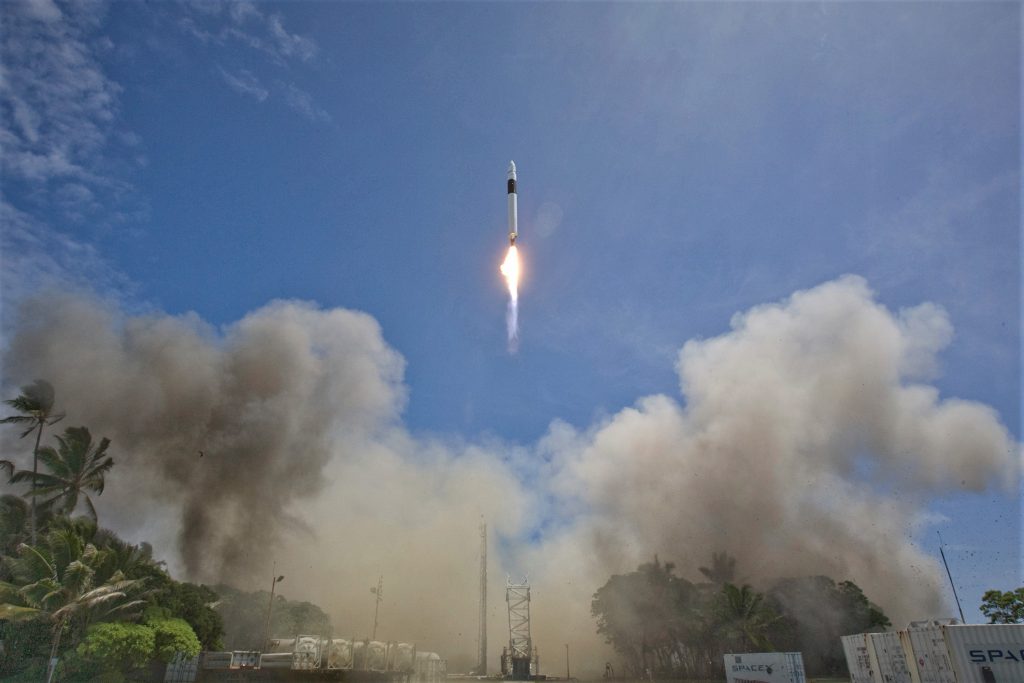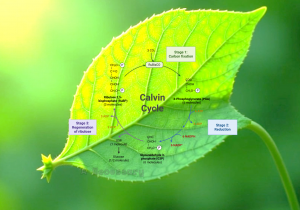Have you ever dreamed about traveling to space? Of course you have. It is usual for kids to imagine that you could travel to space. However, the older you get, the more aware you become of the difficult task that is traveling to space. Elon Musk, a multimillionaire businessman, technology entrepreneur, investor, and engineer, also had these childhood fantasies. Thus, when he had the opportunity and budget, he built his own company in order to accomplish these dreams. This is the story of a businessman who failed multiple times to achieve a childhood fantasy, and, along the way, made a big step for human history.

After being fired from PayPal, Musk revisited his childhood fantasies: rocketships and space travel. He went to a nonprofit group called Mars Society, and donated $100,000 to them to fund a Mars research station in the desert. At this time, Musk had malaria –an intermittent and remittent fever — so he wanted to accomplish something meaningful for the world: send 1 million people to Mars in a 10-year time frame.1 With this idea, he created an organization called the Life to Mars Foundation. This organization had the goal of sending a plant to Mars and growing it with Mars’ resources. However, this goal proved more difficult than originally thought. The price of a new rocket was too expensive for a limited budget. After Musk realized that it was impossible to buy a new rocket for this organization, he stopped this investment, deciding this organization was a waste of his money.2
Despite the failure of his first organization, Elon Musk didn’t give up on his goal of doing something meaningful for human beings. He researched Mars missions throughout history, and he realized that there had not been enough missions in order for human beings to be a multi-planet species. After he realized this, he created the first private space company in 2002, named SpaceX, with this same idea of colonizing Mars. The first goal of this company was to build a rocket with research and commercial functions that could be reused multiple times as if it were an airplane. Moreover, this rocket would modernize space businesses. This rocket’s price point would make it easier to access space. This rocket was called Falcon 1.3

Musk’s radical productivity has helped him succeed. He can work 16 hours a day, only resting 8 hours, which helped him create his first company called X.com, an online bank, which made him a millionaire. As hard as he works to achieve in his companies, he wants the rest of his team, the employees of SpaceX, to work as hard as he does. This was difficult to achieve because it has not been easy to find people as hard-working as himself. For that reason, he fired the “lazy people” of the company and replaced them with young engineers from recognized universities. With this idea, SpaceX was able to grow faster than before.4
To find these excellent engineers, Musk had to look for them all over the country. Thanks to his networks, it was easier to know where to start, though he still had to travel around the country to recruit them. One example is Jeremy Hollman, one of the young engineers who traveled to Texas to work on the rocket. Because of his young age, he didn’t have a lot of responsibilities, making it easier for him to move to Texas and commit his time to this project. 5
The construction of a rockets was not an easy task. Before the creation of SpaceX, government companies were the only ones who built rockets. Musk traveled to Russia to look for resources for his rocket; however, the price of these resources was too high. In order to continue with the construction of the rocket, Musk decided to construct its resources or reuse parts from other machines. For example, Jeremy Hollman, one of the young engineers of SpaceX, discovered that changing the seals, a method of containing fluid within a vessel of the rocket with the seals from a car was enough to use them in the rocket.6 Moreover, Musk, instead of using air force bases, that were expensive and had a long wait time, he used a former U.S. military missile test site on the Kwajalein Island (Kwaj) between Guam and Hawaii in the Marshall Islands, and adapted it to his needs.7 With more ideas like this, and with technology innovations, SpaceX was able to construct more modern rocket parts than even those NASA was building.
The distances between the launch system, the place for operating and monitoring the launch located in California, and the launch area were too far, which made Musk think about an efficient solution to this problem. At that moment, he had another company called Tesla Motors from which he was beginning to make a lot of money; as a result, he had a private jet to travel between his companies. Elon Musk started to use his own private jet to transport the employees from one city to the other in a shorter period of time. This helped in the productivity of the construction of the Falcon 1.8

After the construction of the $6.7 million 21-meter-tall Falcon 1, SpaceX prepared for the first launch of this grand rocket. The first launch attempt was on March 24, 2005; however, the launch was scrubbed. According to Chris Bergin, in his article for NASA Space Flight,
Moments after launching from its launch pad at the Kwajalein Atoll, the vehicle was seen spinning out of control, before communication and its downlink was lost. SpaceX have confirmed the rocket was destroyed.9
Despite the failure of the first launch attempt, Musk and his team started to fix the rocket’s problems and made a second launch on March 21, 2007, almost one year after the first launch attempt. The Falcon 1 flew for a couple of minutes without any problem; nonetheless, the rocket started to wiggle and then blew up.10
On August 2, 2008, the SpaceX engineers prepared the Falcon 1 for its third launch; however, it failed again. Elon Musk wrote an article for SpaceX News where he talked about this,
On August 2nd, Falcon 1 executed a picture perfect first stage flight, ultimately reaching an altitude of 217 km, but encountered a problem just after stage separation that prevented the second stage from reaching orbit.11

The SpaceX employees had worked under a lot of pressure for six weeks to make the fourth and possibly final launch of the rocket on September 28, 2008. In the afternoon that day, the SpaceX team raised the Falcon 1 into its launch position. The SpaceX employees were nervous; they had worked so hard on that rocket for six years. Around nine minutes into its journey, the Falcon 1 shut down just as planned and reached orbit. The Falcon 1 became the first privately developed liquid-fuel rocket to orbit the Earth.12 “When the launch was successful, everyone burst into tears,” Kimbal Musk, Elon Musk’s brother, said. “It was one of the most emotional experiences I’ve ever had.”13
With great success, Elon Musk made more goals for his company. He started to construct the Falcon 9, a bigger rocket with the capacity of taking people to Mars. Moreover, Musk and his team started to design the Dragon Capsule that would be used one day to take human supplies to the International Space Station. Both the Falcon 9 and Dragon Capsule had a cost of $1 billion to complete. However, with the commercial space travels that SpaceX started to do, the construction of these two rockets can be accomplished.14
Thanks to the success of the Falcon 1, we are closer to the possibility of colonizing Mars. Elon Musk plans to take thousands of people to Mars in his commercial rockets in order to create a society on Mars. This sounds like science fiction; however, with the effort of Musk, the colonization of Mars might just be the future of human beings.

- Mike Wall, “SpaceX’s Elon Musk Unveils Interplanetary Spaceship to Colonize Mar,” Space.com (2016), https://www.space.com/34210-elon-musk-unveils-spacex-mars-colony-ship.html. ↵
- Ashlee Vance, Elon Musk: Tesla, SpaceX, and the Quest for a Fantastic Future (New York: Ecco, 2015), 98-106. ↵
- Erik Seedhouse, SpaceX’s Dragon: America’s Next Generation Spacecraft (Chichester, UK: Springer, 2016), 5. ↵
- Ashlee Vance, Elon Musk: Tesla, SpaceX, and the Quest for a Fantastic Future (New York: Ecco, 2015), 122-123. ↵
- Ashlee Vance, Elon Musk: Tesla, SpaceX, and the Quest for a Fantastic Future (New York: Ecco, 2015), 122-123. ↵
- Ashlee Vance, Elon Musk: Tesla, SpaceX, and the Quest for a Fantastic Future (New York: Ecco, 2015), 123. ↵
- Steven Muegge and Ewan Reid, “Elon Musk and SpaceX: A Case Study of Entrepreneuring as Emancipation,” Technology Innovation Management Review 9 (2019): 18. ↵
- Ashlee Vance, Elon Musk: Tesla, SpaceX, and the Quest for a Fantastic Future (New York: Ecco, 2015), 128. ↵
- Chris Bergin “Falcon 1 suffers launch failure,” NASA Space Flight (2006), nasaspaceflight.com/2006/03/falcon-1-suffers-launch-failure/. ↵
- Ashlee Vance, Elon Musk: Tesla, SpaceX, and the Quest for a Fantastic Future (New York: Ecco, 2015), 142. ↵
- Elon Musk “Falcon 1, Flight 3 Mission Summary,” SpaceX News (2008), https://www.spacex.com/news/2013/02/11/falcon-1-flight-3-mission-summary. ↵
- Emily Shanklin “SpaceX Successfully Launches Falcon 1 To Orbit,” SpaceX News (2008), https://www.spacex.com/press/2012/12/19/spacex-successfully-launches-falcon-1-orbit ↵
- Kimbal Musk, interview by Ashlee Vance, in Elon Musk: Tesla, SpaceX, and the Quest for a Fantastic Future (New York: Ecco, 2015), 203. ↵
- Ashlee Vance, Elon Musk: Tesla, SpaceX, and the Quest for a Fantastic Future (New York: Ecco, 2015), 204. ↵



38 comments
Cassandra Sanchez
Elon Musk is a truly passionate individual, who accepted and overcome many failures to eventually, finally, reach his goal. I have always associated Musk with the famous Tesla company, but I have never known about this true passion to reach Mars. His dream seems like it is almost impossible to any ordinary person but I believe that this goal is something that can be reached with just enough determination. Living on Mars would be a very incredible experience.
Alexander Avina
It is always interesting to read about Elon Musk. The man has a very profound and ambitious vision of the future. This article does a great job of showing the origins of his plan to colonize Mars. I learned a good amount of information that I had no clue about. This was a very informative article and it was very well-written. I think that the story of Musk’s vision should act as inspiration for the next generation of inventors and innovators.
Nicole Ortiz
I had always thought it would be cool to go to space and see what it’s like from that perspective and its cool that because of Elon Musk’s ambition, it’s something that could be done in the future. I had heard about him before but I was never fully aware of all that he’s done and invests in, I had just thought that he created Teslas. But its cool to see how driven he is to try and accomplish his goals and already met one and despite that, he keeps wanting to improve to make his innovations better and efficient.
Rinnu Joy
This article was really informative and interesting as it told the introduction of SpaceX, creation of Falcon 1 and the story of Elon Musk. Musk was a dedicated and passionate man that he stood for what he wanted and fight until he got it. He made Falcon 1 possible in his fourth try, but even until then he was working hard without giving up. I would say that he was so strategic that he find and used all ways to reduce the expenses involved in making a rocket.
Congratulations for the great work!
Jacqueline Mendez
I’ve never have wanted to go to space ever just because its such a scary place. You leave the atmosphere and no more oxygen. Elon Musk’s story is very inspiring as he was just a kid like the rest of us with a dream. Although he didn’t stops or moves on from that dream he kept going and made it real.
Jose Maria Llano Aranalde
It is really cool to see how Elon Musk has changed so much through his technology and vision. He was not afraid to believe in himself and push through. In all his projects that he has he always seems to be the best and one of the first to complete it. Especially with the vision that he has of colonizing Mars. He is so driven and determined that it wont be a long time before this expedition will be possible.
Sydney Hardeman
It is very inspiring to hear Elon Musk’s story and how he turned his dream into a reality through hard work, perseverance, and dedication to his passion. He has a vision of colonizing on Mars which is interesting because a man like him, who is able to innovate technology and bring his dreams to life, has a true chance of doing what many consider impossible.
Juan Arceo
I have always heard about Elon Musk in today’s world but I never really got a clear view as to what he wanted and what he lived for. Thanks to this article however, I now know of his plans to go to Mars and that just sounds amazing. Like the article stated in the introduction, I have at one point thought about becoming an astronaut and maybe one day find new life, a new home, or maybe something even far more advanced but now that I have grown up that idea isn’t as strong as before. Maybe if this plan truly does work, I may need to experience it to true feel what it is like to live on Mars.
Mia Correa
I actually reached out to Elon Musk my senior year in high school, but got no response.Reading this article really makes me wish he would have responded because I wanted him to participate in a Skype call with my high school astronomy club. Elon Musk is a very successful man with high ambitions and the fact that he’s doing so much and spending so much money to help colonize Mars is one of many reasons why I look up to him. I personally absolutely LOVE astronomy and I too hope to soon go to mars!
Rosa Robledo Martinez
I enjoyed reading this article and learning about Elon Musk’s and his admiration for flying space crafts. I heard last year that he sent one of his personal cars putter space, and that it’s currently orbiting the moon or something.But I honestly admire Elon’s determination to continue to strive for his dream goal. I think Musk’s determination to colonize in Mars is very interesting, because you always here people always joke around that there’s life in Mars but never really work for it. I am glad that he is working on something he enjoys to do.